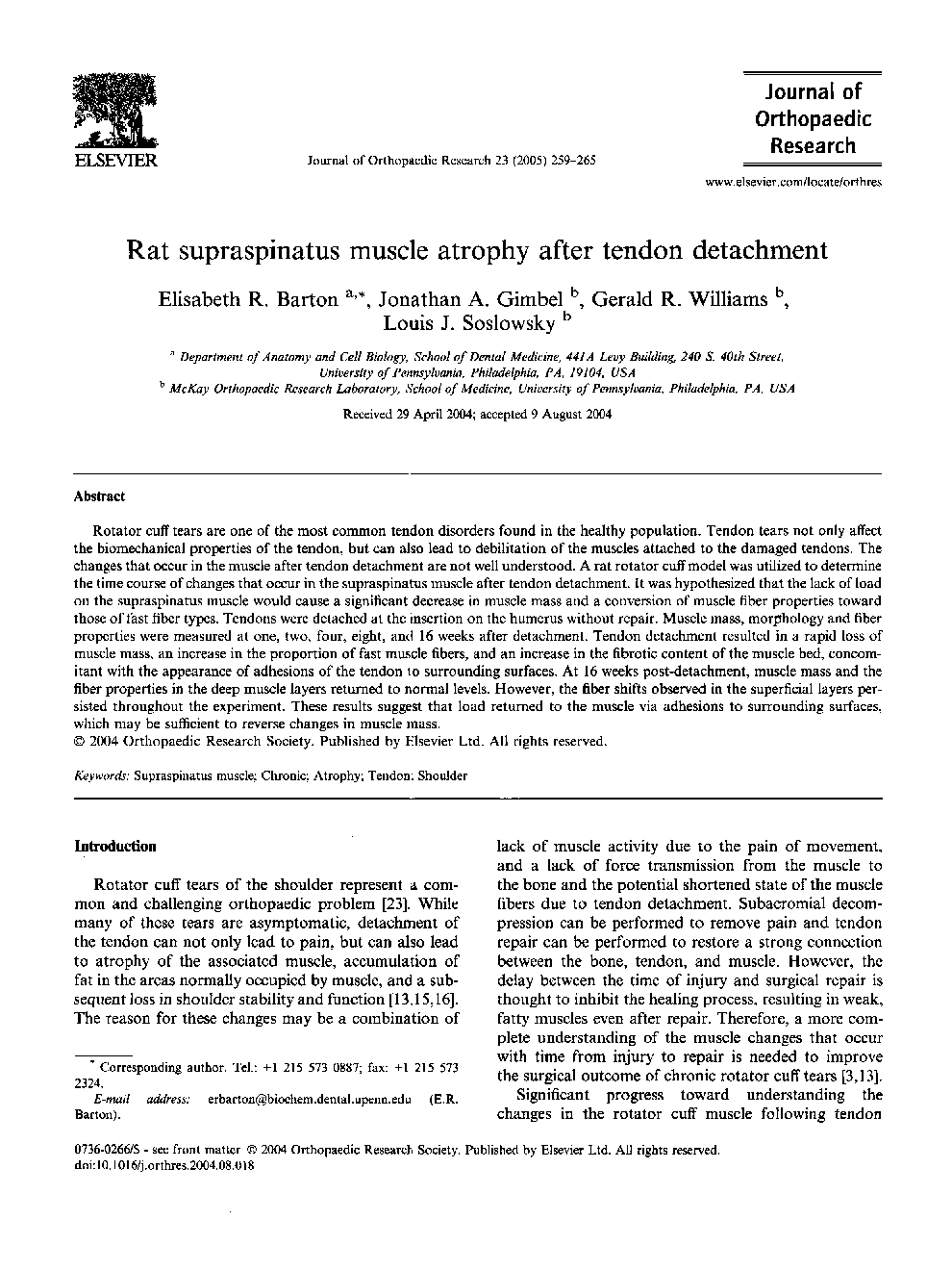| Article ID | Journal | Published Year | Pages | File Type |
|---|---|---|---|---|
| 9354055 | Journal of Orthopaedic Research | 2005 | 7 Pages |
Abstract
Rotator cuff tears are one of the most common tendon disorders found in the healthy population. Tendon tears not only affect the biomechanical properties of the tendon, but can also lead to debilitation of the muscles attached to the damaged tendons. The changes that occur in the muscle after tendon detachment are not well understood. A rat rotator cuff model was utilized to determine the time course of changes that occur in the supraspinatus muscle after tendon detachment. It was hypothesized that the lack of load on the supraspinatus muscle would cause a significant decrease in muscle mass and a conversion of muscle fiber properties toward those of fast fiber types. Tendons were detached at the insertion on the humerus without repair. Muscle mass, morphology and fiber properties were measured at one, two, four, eight, and 16 weeks after detachment. Tendon detachment resulted in a rapid loss of muscle mass, an increase in the proportion of fast muscle fibers, and an increase in the fibrotic content of the muscle bed, concomitant with the appearance of adhesions of the tendon to surrounding surfaces. At 16 weeks post-detachment, muscle mass and the fiber properties in the deep muscle layers returned to normal levels. However, the fiber shifts observed in the superficial layers persisted throughout the experiment. These results suggest that load returned to the muscle via adhesions to surrounding surfaces, which may be sufficient to reverse changes in muscle mass.
Related Topics
Health Sciences
Medicine and Dentistry
Orthopedics, Sports Medicine and Rehabilitation
Authors
Elisabeth R. Barton, Jonathan A. Gimbel, Gerald R. Williams, Louis J. Soslowsky,
